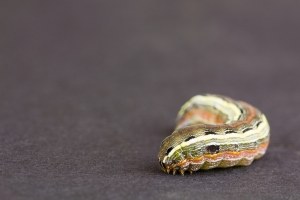New Flu Vaccine Made with Armyworms and Insects Claims to be “Pure”
There are three different influenza vaccine production technologies approved by the Food and Drug Administration (FDA) for use in the United States: the egg-based flu vaccine, the cell-based flu vaccine and the most recent recombinant flu vaccine. In January 2013, the FDA approved the first influenza vaccine produced with the help of an insect virus and recombinant DNA technology. Recombinant DNA technology involves artificially constructing DNA by combining gene sequences from two or more different organisms. The FDA claims that this approach assists in speeding up the production of the flu vaccine in the event of a flu pandemic because it does not rely on a chicken egg supply. Currently, there is one influenza vaccine produced using recombinant technology that is approved by the FDA, Flublok. The Flubok website states that it is “highly pure” because it is manufactured without eggs, preservatives like thimerosal, latex, formaldehyde, gelatin, antibiotics and a live or inactivated virus. However, the fact that the Flublok manufacturer package insert acknowledges insect virus and DNA adventitious agent contamination is revealing. Substituting toxic vaccine ingredients with other potentially toxic ingredients does not make vaccines safer. Flublok is not a “pure” vaccine and only time will tell what the real risks are to human health from its widespread use.




